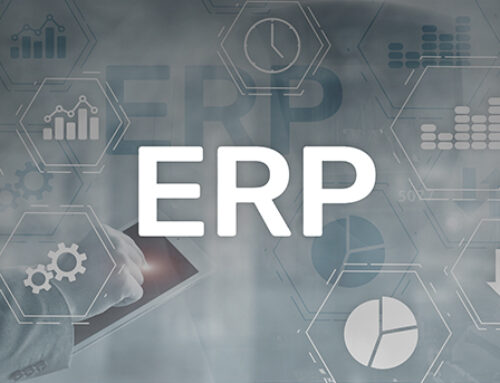In today’s fast-paced business environment, financial planning and analysis (FP&A) play a crucial role in helping organizations make informed decisions and achieve their strategic goals. Effective FP&A requires access to accurate and timely financial data, as well as robust reporting capabilities to analyze and interpret that data. One powerful tool that enables organizations to streamline their FP&A processes is NetSuite reporting.
NetSuite is a cloud-based enterprise resource planning (ERP) platform that offers comprehensive financial management capabilities. As part of its feature set, NetSuite provides robust reporting functionality that allows organizations to generate, analyze, and visualize financial data in a centralized and user-friendly manner.
NetSuite reporting encompasses a wide range of capabilities, including financial statement generation, customizable dashboards, and advanced analytics. These features enable organizations to gain real-time visibility into their financial performance, identify trends and patterns, and conduct scenario planning for future projections.
Enhancing Financial Planning with NetSuite Reporting
One of the primary benefits of NetSuite reporting in FP&A is the ability to access financial data in real time. With NetSuite, financial information is updated automatically, ensuring that decision-makers have the most up-to-date data at their disposal. This real-time access empowers organizations to make agile and data-driven decisions.
Furthermore, NetSuite’s customizable dashboards and visualizations provide a user-friendly interface for presenting financial information. Decision-makers can tailor their dashboards to display key performance indicators (KPIs) and metrics that are relevant to their specific needs. This visual representation of data simplifies the analysis process and enables stakeholders to quickly understand and interpret financial information.
NetSuite reporting also streamlines financial reporting processes through automation. The platform allows organizations to create templates for financial statements, such as balance sheets, income statements, and cash flow statements. These templates can be customized to align with specific reporting requirements and can be automatically populated with the latest financial data, eliminating manual data entry and reducing the risk of errors.
Additionally, NetSuite’s advanced analytics and forecasting capabilities enable organizations to go beyond basic reporting and gain deeper insights into their financial data. The platform offers tools for conducting variance analysis, identifying trends, and forecasting future performance. These features provide organizations with a comprehensive view of their financial health and facilitate more accurate budgeting and planning.
Streamlining Analysis with NetSuite Reporting
NetSuite reporting excels in consolidating financial data from multiple sources. The platform can integrate data from various departments, subsidiaries, and even external systems, providing a unified view of the organization’s financial performance. This consolidation streamlines the analysis process, allowing decision-makers to examine the big picture while also drilling down into specific details when needed.
Moreover, NetSuite’s reporting capabilities extend beyond standard financial statements. The platform enables organizations to generate comprehensive reports that provide insights into various financial aspects, such as profitability analysis, cost allocation, and revenue recognition. These reports help organizations identify areas of strength and areas that require improvement, facilitating more effective decision-making.
Data visualization is another key feature of NetSuite reporting that enhances analysis. The platform offers robust visualization tools, including charts, graphs, and interactive dashboards, which transform complex financial data into easy-to-understand visuals. This visual representation allows decision-makers to identify trends, spot anomalies, and gain a deeper understanding of the factors impacting financial performance.
NetSuite reporting also supports variance analysis, which is essential for tracking performance against budgets, forecasts, and historical data. By comparing actuals to planned figures, organizations can identify deviations, understand the underlying causes, and take corrective actions when necessary. This analytical capability helps organizations identify areas of inefficiency, optimize resource allocation, and improve overall financial performance.
Improving Decision-Making with NetSuite Reporting
NetSuite reporting significantly improves decision-making by providing enhanced visibility into an organization’s financial performance. Decision-makers can access real-time data and generate reports that provide a holistic view of the organization’s financial health. This visibility allows for informed decision-making, whether it’s evaluating investment opportunities, assessing the financial viability of projects, or making strategic business decisions.
Identifying key performance indicators (KPIs) is crucial for effective decision-making, and NetSuite reporting enables organizations to define and track relevant KPIs. Decision-makers can create customized reports that focus on specific metrics and KPIs aligned with their business objectives. This level of granularity ensures that decision-makers have access to the most relevant information when evaluating performance and making strategic decisions.
NetSuite reporting also facilitates scenario planning and what-if analysis. Decision-makers can simulate different scenarios and assess their potential impact on financial performance. By exploring various scenarios, organizations can make informed decisions, develop contingency plans, and mitigate risks.
Overcoming Challenges in NetSuite Reporting
While NetSuite reporting offers numerous benefits, organizations may face some challenges during implementation. Data accuracy and integrity are critical factors that require careful attention. It’s crucial to ensure that data is properly captured, integrated, and validated within the NetSuite system. Regular data audits and data cleansing processes are necessary to maintain accurate and reliable financial information.
Data security and access control are also important considerations. Organizations must implement appropriate security measures to safeguard financial data and ensure that only authorized personnel have access to sensitive information. This involves setting up user permissions and regularly reviewing access privileges to mitigate the risk of data breaches.
Integration issues with third-party systems can also pose challenges in NetSuite reporting. Organizations often rely on various software applications for different business functions. Ensuring smooth integration between NetSuite and these external systems is crucial for seamless data flow and accurate reporting.
User training and adoption are essential to maximize the benefits of NetSuite reporting. Providing comprehensive training and support to users will help them understand the system’s functionalities, effectively utilize reporting tools, and navigate through the platform’s features. Encouraging user adoption and empowering employees to leverage self-service reporting capabilities are key factors in driving successful implementation.
Best Practices for Effective NetSuite Reporting in FP&A
To maximize the benefits of NetSuite reporting in FP&A, organizations should follow some best practices. Firstly, it’s important to define clear reporting requirements and objectives. This ensures that the reporting processes align with the organization’s strategic goals and provide the necessary insights to support decision-making.
Establishing standardized reporting processes is also crucial. Organizations should develop templates and reporting frameworks that are consistent across different departments and subsidiaries. Standardization facilitates easier data consolidation, reduces reporting inconsistencies, and ensures that decision-makers receive accurate and reliable information.
Regularly reviewing and updating report templates is essential to maintain the relevance and usefulness of the reports. As business needs evolve, organizations should adapt their reporting formats and metrics to reflect the changing landscape. Continuous improvement in reporting processes is crucial to keep up with evolving business requirements and deliver meaningful insights.
Training and empowering users for self-service reporting is an effective way to enhance the efficiency of the reporting process. Providing comprehensive training and ongoing support to users enables them to generate their own reports, explore data, and derive insights without relying solely on IT or finance teams. This promotes agility and autonomy in decision-making.
Conclusion
NetSuite reporting plays a crucial role in financial planning and analysis, offering organizations powerful tools to streamline their FP&A processes. With real-time access to financial data, customizable dashboards, and automation capabilities, NetSuite reporting enhances visibility, improves analysis, and supports informed decision-making. By overcoming challenges, implementing best practices, and empowering users, organizations can harness the full potential of NetSuite reporting to drive financial success and achieve their strategic goals. The future of NetSuite reporting in FP&A holds immense possibilities for organizations seeking to optimize their financial planning and analysis processes.





Leave A Comment